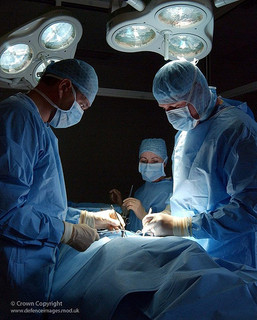Managing Chronic Post-Surgical Pain Syndromes
Tuesday, November 26, 2013 Chronic post-surgical pain (CPSP) at the surgery site can occur in up to one out of five patients undergoing surgery – particularly in those with surgery of the chest wall, breast, total joint replacements and iliac crest bone harvest. It can, however, occur after any type of surgery including minor procedures.
Chronic post-surgical pain (CPSP) at the surgery site can occur in up to one out of five patients undergoing surgery – particularly in those with surgery of the chest wall, breast, total joint replacements and iliac crest bone harvest. It can, however, occur after any type of surgery including minor procedures.
This problem and possible management strategies for the non-pain specialist are now reviewed in a paper by my colleagues Saifee Rashiq and Bruce Dick from the University of Alberta, in a paper published in the Canadian Journal of Anaesthesiology.
The consequences of CPSP on the patients is severe with staggering economic implications and powerful negative effects on the quality of life. CPSP also places a a significant burden on chronic pain treatment services.
Increased incidence of CPSP is seen in associated with younger age, obesity and female sex as well as certain psychological characteristics (anxiety, depression, stress, and catastrophizing).
Other risk factors include, “Capacity overload” in the six months prior to surgery (having had more to deal with in the psychological sense than the subject thought (s)he could handle) and/or the presence of two or more indicators suggestive of stress (sleep disorder, exhaustibility/exhaustion, frightening thoughts, dizziness, tachycardia, feeling of being misunderstood, trembling hands, or taking sedatives or sleeping pills).
In addition, severe acute or chronic pain (even when unrelated to the surgical site) prior to surgery appears to be a predisposing factor.
Emerging evidence shows that the syndrome is not simply a consequence of local nerve injury but rather involves higher cognitive functions that influence events at the spinal cord by powerful descending control mechanisms.
Thus, CPSP is increasingly seen as a “multisystem illness that transcends the operative field and includes, most importantly, the patient’s psychological state and social circumstances“.
Based on their findings, the authors argue for better pain control prior to surgery as well as the use of regional anesthetic techniques, infiltration of local anesthetic, or preoperative use of gabapentin under special circumstances.
However, they also note that the ability of other known interrupters of afferent nociceptive transmission-commonly used to reduce CPSP when administered at the time of surgery remain currently unproven.
Given that obesity is a risk factor for this syndrome and many obese patients present with pre-surgical pain, clinicians working with this population should be aware of this problem and counsel patients accordingly.
If you have experienced this problem, I’d like to hear about it.
@DrSharma
Sudbury, ON
![]() Rashiq S, & Dick BD (2013). Post-surgical pain syndromes: a review for the non-pain specialist. Canadian journal of anaesthesia = Journal canadien d’anesthesie PMID: 24185829
Rashiq S, & Dick BD (2013). Post-surgical pain syndromes: a review for the non-pain specialist. Canadian journal of anaesthesia = Journal canadien d’anesthesie PMID: 24185829
.


